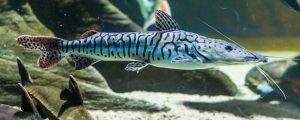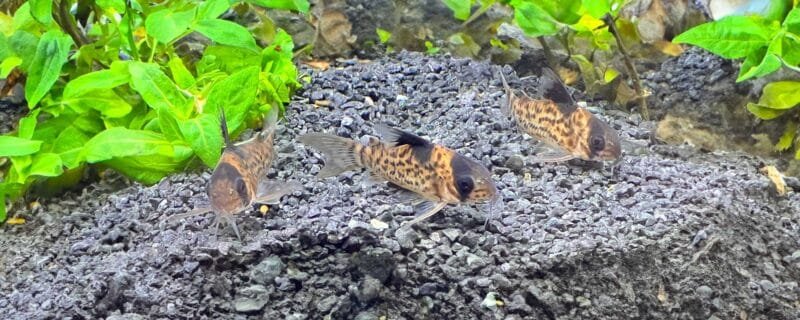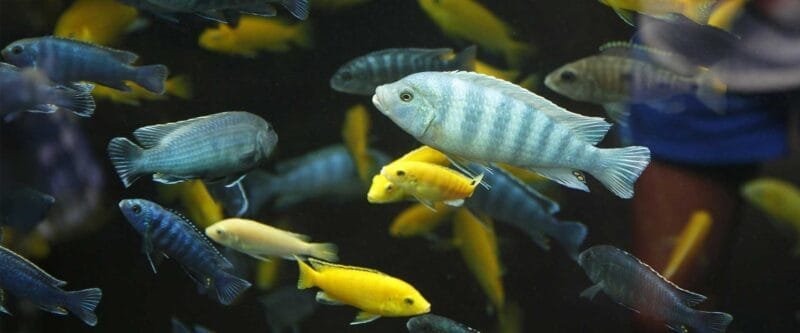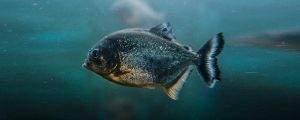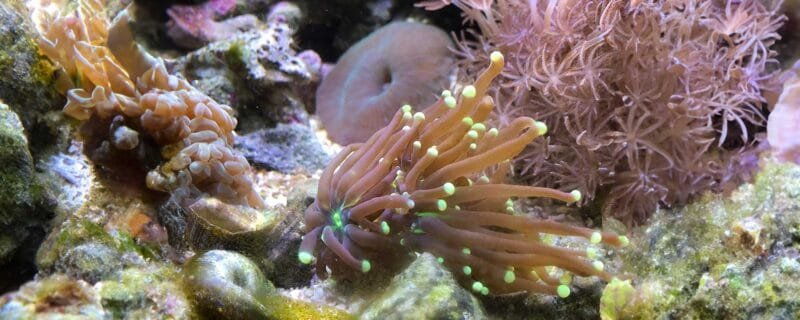The Dwarf Petricola Catfish (Synodontis petricola) is a small, peaceful freshwater catfish species native to Lake Tanganyika in East Africa. Often confused with its larger cousin, the Cuckoo Catfish (Synodontis multipunctatus), this charming species has become a favorite among aquarists for its active behavior, striking pattern, and manageable size. It is one of the most community-friendly Synodontis species available and thrives in well-maintained freshwater tanks with plenty of rockwork and hiding spots.
Native Habitat
Synodontis petricola is endemic to the rocky shorelines of Lake Tanganyika, one of the African Great Lakes known for its unique biodiversity. In the wild, these fish inhabit the deeper rocky regions and crevices, where they feed on small invertebrates and organic debris. Their natural environment provides excellent water clarity, stable pH, and moderate hardness — conditions that should be replicated in captivity for optimal health and coloration.
Appearance and Size
The Dwarf Petricola Catfish displays a cream-to-tan body adorned with dark brown or black spots, giving it an eye-catching contrast that makes it stand out in community aquariums. It has a pair of large, expressive eyes and characteristic Synodontis barbels that help it navigate and forage in dimly lit environments. This species typically grows to about 3 to 4 inches (7.5–10 cm) in length, making it an excellent choice for medium-sized aquariums.
Diet and Feeding
In its natural environment, Synodontis petricola feeds on insect larvae, crustaceans, and detritus. In captivity, it accepts a wide range of foods, making it an omnivorous and undemanding feeder. Offer a balanced diet of sinking pellets, algae wafers, frozen or live foods such as bloodworms, brine shrimp, and daphnia. Occasional vegetable matter, like blanched spinach or cucumber slices, helps round out its nutrition. Feeding should occur mainly in the evening or at lights-out, as these catfish are primarily nocturnal.
Sexing and Breeding
Sexing Dwarf Petricola Catfish can be challenging. Males are generally slimmer and slightly smaller than females, especially when viewed from above. Breeding in captivity is possible but requires patience and optimal conditions. This species is an egg scatterer, and spawning is often stimulated by changes in water temperature and high-protein diets. Providing caves and rock crevices mimics their natural breeding environment and increases success rates. While they may not exhibit the parasitic breeding behavior seen in S. multipunctatus, they can occasionally spawn in the presence of cichlids, utilizing their protective nature to guard the eggs inadvertently.
Water Conditions and Tank Setup
To replicate their native Lake Tanganyika habitat, maintain the following parameters:
- Temperature: 75–81°F (24–27°C)
- pH: 7.8–8.5
- Hardness: 10–20 dGH
- Tank Size: Minimum 30 gallons for a small group
The aquarium should include plenty of rockwork, caves, and hiding spaces. Smooth substrates are preferred to prevent injury to their delicate barbels. Gentle water movement and excellent filtration are essential to maintain water clarity and oxygenation, similar to their native lake conditions. Regular partial water changes help keep the environment stable and healthy.
Temperament and Tank Mates
Synodontis petricola is known for its peaceful and social temperament, making it ideal for community aquariums. They do best when kept in groups of at least 3–5 individuals, as they exhibit more natural behaviors and feel secure in numbers. They coexist well with peaceful African cichlids, particularly smaller Tanganyikan species like Neolamprologus multifasciatus, as well as tetras, rainbowfish, and other calm freshwater species. Avoid housing them with aggressive or large predatory fish that may outcompete or harass them.
Ease of Care
This species is relatively hardy and adaptable, provided that water quality remains high and sudden changes are avoided. Its manageable size and peaceful disposition make it suitable even for intermediate aquarists. Regular feeding, clean water, and adequate shelter ensure a long lifespan — often up to 10 years or more in well-maintained aquariums.
Species Variations and the Albino Petricola
Though Synodontis petricola itself is well-established in the aquarium trade, there are variations sometimes labeled as “False Petricola” or “Lucipinnis,” which are similar in appearance but differ slightly in pattern and size. The Albino Petricola is a selectively bred variation featuring a creamy-white body with pinkish eyes and faint spotting. While not naturally occurring, the Albino version retains the same behavior, diet, and care requirements as the standard form and offers a unique aesthetic appeal in aquascaped tanks.
Compatible Species
When designing a community setup, consider pairing the Dwarf Petricola Catfish with species such as:
- Harlequin Rasboras
- Congo Tetras
- Dwarf Gouramis
- Shell-dwelling cichlids like Neolamprologus multifasciatus
- Other Synodontis species of similar temperament
Common Health Issues
While robust, Petricola Catfish can be susceptible to stress-related illnesses if housed in poor conditions. Maintain stable pH and hardness levels and ensure that no sharp decorations are present that could damage their barbels. Common issues include fin rot, parasitic infections, or bacterial outbreaks — typically preventable with proper maintenance and quarantine of new tank mates.
Conclusion
The Dwarf Petricola Catfish (Synodontis petricola) stands out as one of the most charming, peaceful, and manageable species within the Synodontis genus. Its playful nature, adaptability, and attractive spotted pattern make it an ideal addition to any freshwater aquarium — particularly for aquarists seeking to replicate the stunning biotopes of Lake Tanganyika. Whether you choose the classic or Albino variety, these catfish will bring years of activity and character to your underwater community.
Frequently Asked Questions
1. How big do Dwarf Petricola Catfish get?
They typically reach 3 to 4 inches (7.5–10 cm) in length, making them one of the smallest Synodontis species suitable for community aquariums.
2. Can I keep Synodontis petricola with cichlids?
Yes, they coexist well with peaceful Tanganyikan and smaller African cichlids, provided there are plenty of hiding spaces and the environment is not overly aggressive.
3. What is the difference between Synodontis petricola and Synodontis multipunctatus?
While both are spotted Synodontis species, S. multipunctatus grows larger and is known for its parasitic breeding behavior, while S. petricola is smaller, gentler, and better suited for community setups.

